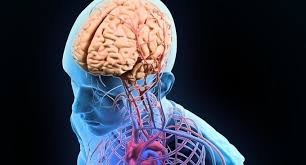It is as if the experience of our life were captured on a film. In this case the film would be the body tissue, the brain’s tissue. The experiences themselves, however, would exist independently of the film, which in any case could not capture their entirely.
In a manner of speaking the activity of our brain adjusts the speed with which we, as a physical creature, perceive life’s events. Theoretically, those events could be slowed down or run at a quicker pace. Again in a manner of speaking, the sound, vision, dimensional solidarity and so forth are “Dubbed in. ” The picture runs at the same speed, more or less. The physical senses chime in together to give us a dramatic sensual chorus, each “voice” keeping perfect time with all the other sensual patterns so that as a rule there is harmony and a sense of continuity, with no embarrassing lapses.
The same applies to our thoughts, which if we bother to listen seem to come smoothly one after another, more or less following the sequence of exterior activity. The brain like the movie screen gives us a physical picture, in living stereo, of inner activities that nowhere themselves physically appear.
Our brain gives us a handy and quite necessary reference system with which to conduct corporal life. It puts together for us in their “proper” sequences events that could be experienced in many other ways, using other kinds of organization. The brain, of course, and other portions of the body, tune into our planet and connect us with numberless time sequences — molecular, cellular, and so forth — so that they are synchronized with the world’s events.
The brain organizes activity and translates events, but it does not initiate them. Events have an electromagnetic reality that is then projected onto the brain for physical activation. Or instruments only pick up certain levels of the brain’s activity. They do not perceive the mind’s activity at all, except as it is imprinted onto the brain.
Even dreams are so imprinted. When one portion or one half of the brain is activated, for example, the corresponding portion of the other half is also activated, but at levels scientists do not perceive. It is ridiculous to call one side or the other of the brain dominant, for the full richness of the entire earth experience requires utilization of both halves, as does dreaming.
In dreaming, however, the full sense-picture usually projected by the brain, and reinforced by bodily action, is not necessary. Those dream experiences often seem out of joint or out of focus in morning’s hindsight, or in retrospect, simply because they occur with a complexity that the brain could not handle in ordinary waking terms.
The body obviously must react in our official present; hence the brain neatly keeps its physical time sequences with spaced neural responses. The entire package of physical reality is dependent upon the senses’ data being timed — synchronized — giving the body an opportunity for precise action. In dreams the senses are not so restrained. Events from past, present, and future can be safely experienced, as can events that would be termed probable from our usual viewpoint, since the body, again, is not required to act upon them.
Because of the brain’s necessary specifications, large portions of our own greater reality cannot appear through its auspices. The brain might consider such extracurricular activity as background noise or clutter that it could not decipher. It is the mind, then, as the brain’s non-physical counterpart, that decides what data will activate the brain in that regard. The so-called ancient portions of the brain among them the brainstem — limbic system contain “the mind’s memories.” Generally speaking, this means important data to which, however, no conscious attention need be given.
None could be given, because the information deals with time scales that the more “sophisticated” portions of the brain can no longer handle.
The knowledge of the body’s own biological probabilities takes place at those ancient levels, and at those levels there is activity that results in a cellular communication existing between all species. The brain has built-in powers of adaptation to an amazing degree, so that innately one portion can take over for any other portion, and perform its activities as well as its own. Beliefs in what is possible and not possible often dull that facility, however. While the neural connections are specific, and while learned biological behavior dominates basically, the portions of the brain are innately inter-changeable, for they are directed by the mind’s action.
This is most difficult to explain, but the capacity for full conscious life is inherent in each portion of the body itself. Otherwise, in fact, it’s smooth synchronically would be impossible. The brain has abilities we do not use consciously because our beliefs prevent us from initiating the proper neural habits. Certain portions of the brain seem dominant only because of those neural habits that are adopted in any given civilization or time. But other cultures in our past have experienced reality quite differently as a result of encouraging different neural patterns, and putting experience together through other focuses.
Dreaming, for example, can be “brought into focus” in a far sharper fashion, so that at least some of those experiences can be consciously utilized. When this happens, we are consciously taking advantage of experience that is physically and logically extra-curricular.
We are bringing into our consciousness traces of events that have not been registered in the same way that waking events are by the brain. The dream events are partially brain-recorded, but the brain separates such experience from waking events. Dreams can provide us with experience that in a manner of speaking, at least, is not encountered in time. The dream itself is recorded by the brain’s time sequences, but in the dream itself there is a duration of time “that is timeless.”
Theoretically, certain dreams can give us a lifetime’s experience to draw upon, though the dream itself can take less than an hour in our time. In a way, dreams are the invisible thickness of our normal consciousness. They involve both portions of the brain. Many dreams do activate the brain in a ghostly fashion, sparking responses that are not practically pertinent in ordinary terms. That is, they do not require direct action but serve as anticipators of action, reminders to the brain to initiate certain actions in its future.
Dreams are so many-leveled that a full discussion requires an almost impossible verbal expertise. For while dreams do not necessitate action on the part of the whole body, and while the brain does not register the entire dream, the dream does serve to activate biological action — by releasing hormones, for example.
There are also what I will call body dreams. No consciousness, to whatever degree, is fully manifested in matter. There is always constant communication between all portions of the body, but when the conscious mind is diverted that activity often increases. Cellular consciousness at its own level then forms a body dream. These do not involve pictures or words, but are rather like the formations of electromagnetic intent, anticipating action to be taken, and these may then serve as initiators of therapeutic dreams, in which “higher” levels of consciousness are psychologically made aware of certain conditions.
Many problems, however, are anticipated through body dreams, and conditions cleared at that level alone.








